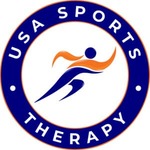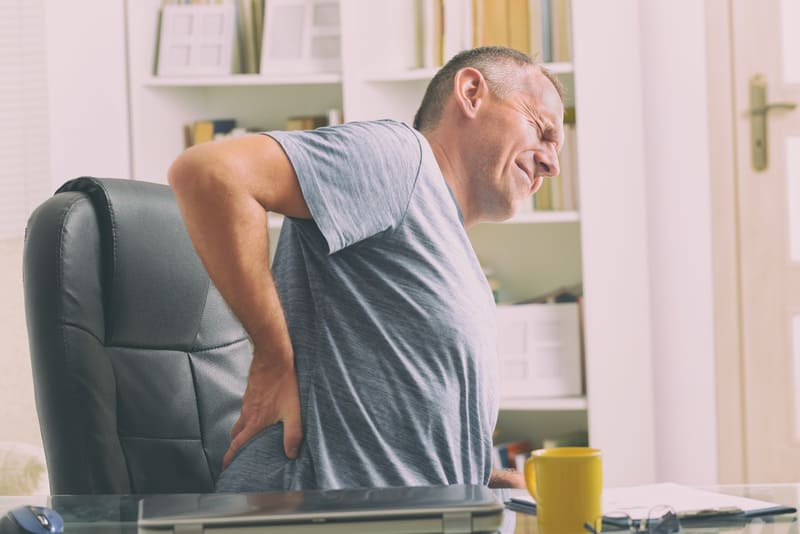Back Pain
Back pain is one of the most common reasons we miss work, school, or see a doctor. Nearly 80% of all people will experience an episode of back pain during their life. As anyone who’s experienced it knows, back pain can quickly go from being a minor annoyance to a debilitating issue.
Luckily, there are many ways to get relief, including a few at-home fixes that can help ease the symptoms and reduce the likelihood of future back pain. For severe back pain, you should always consult with a doctor, who may recommend physical therapy as an option to manage or treat the condition.
It is crucial to be aware that everyone is different, and therefore everyone’s back pain is different. Treatment is not a one size fits all approach, and your Physical Therapist or Chiropractor can play a pivotal role in helping you develop the best plan of care to eliminate your back pain.
Types and Common Causes of Back Pain
There are many different types of back pain as well as different reasons for causing it. Back pain can result from a simple movement or develop over a longer period of time from repetitive movements or poor posture.
Have you ever experienced any pain in your back due to having a job where you sit all day? How about after exercising, helping a friend move some furniture, buying a new mattress, being involved in a car accident, or for no known reason at all?
Different structures in your back, such as the spine, the discs inside the spine, and the muscles surrounding the spine, can be injured acutely with some of these sudden events. However, these structures can also wear down and degenerate over time, causing pain as well.
Age
Many people start to experience back pain between the ages of 40 and 60 as a normal side-effect of aging. There are discs located in between the vertebrae of the spine filled with a gel-like substance that aids in providing a cushion between the bones of the spine. With age, the gel inside the discs starts to evaporate, leading to less space between the vertebrae. The discs ultimately become less pliable, and connecting cartilage wears away. This kind of age-related wear and tear can lead to osteoarthritis, herniated discs or disc pain, as well as spinal stenosis.
Injury
Back pain is not only limited to age. The most common cause of lower to mid-back pain is a torn or pulled muscle or ligament, followed by injuries to the discs after a simple bending and lifting movement. This is often due to weakness or inactivity of the core muscles, which are a group of deep muscles responsible for stabilizing your spine and help to prevent additional stress on the spine when performing these movements.
Posture
Posture is another common cause of lower, mid and upper back pain. The weakness of certain muscles often stems from poor body mechanics, and body positioning from work and everyday activities is one of the main culprits of this pain. Simple corrective exercises and corrective biomechanical adjustments to these everyday tasks can prevent future and eliminate current pain caused by this.
How to Get Rid of Back Pain
If you’re suffering from aches or tension, reduced mobility, or back spasms, you can find relief in several ways.
- Physical Therapy and Chiropractic Care
- Consulting with your Physical Therapist or Chiropractor will allow them to perform a detailed evaluation and assessment, which will help determine the actual source of your pain. It is important to identify the source of the pain and start your treatment there instead of just trying to treat the symptoms. If you don’t address the root cause of the pain, it will often either not get better, or the pain will be more likely to come back in the future. It is also just as crucial to identify the root cause of pain so that your Physical Therapist or Chiropractor can select the most appropriate treatment to get rid of “your” pain. Remember, it is not a one-size-fits-all, and certain treatments or exercises that may benefit one person with back pain could make another person’s pain worse.
- Home Exercise Program
- Once the origin of pain has been identified, and treatment has started to decrease or eliminate your pain, it is imperative to continue with a home exercise program to reinforce the progress you have made and, more importantly, prevent the pain from coming back. It would be best to discuss this with your Physical Therapist or Chiropractor to ensure you are performing all of your exercises correctly.
- Pilates and Yoga
- Pilates and Yoga can be excellent ways of reinforcing and maintaining your progress to prevent your back pain from returning. Stretching will maintain proper mobility to allow you to move freely and good core and general strengthening to stabilize the spine and surround muscles. This will prevent unwanted stress on your back and allow you to perform your movements and exercises from day to day in a much more protected manner, thereby preventing re-injury. Be sure to consult with your Physical Therapist or Chiropractor at midtown physical rehabilitation center or other clinics regarding any specific stretches or exercises you might want to avoid due to your specific prior injury or back pain.
- Ice and Heat
- One of the best and easiest home remedies for back pain is the tried “ice then heat” method. After an injury, icing the affected area for the first 48 hours is recommended by most doctors. Ice acts as a local anesthetic, numbing the area, as well as reducing swelling and inflammation. Try using a cold pack for 10 to 20 minutes at a time, with a thin cloth between your skin and the ice. After the first 48 hours, ice might lose its efficacy, and you might want to switch to heat for relief. A heating pad or compress stimulates blood circulation and relaxes the muscles. Applying low-level, continuous warmth might also help ease chronic back pain. However, it’s essential to give your skin some breaks and never use too high a setting to avoid burns. It is important to remember a general rule of thumb regarding both ice and heat, which is not to apply either for more than 20 minutes at a time and no more than once every 2 hours to avoid creating an adverse effect.
- Aerobic Exercise
- Even though non-steroidal anti-inflammatory drugs (NSAIDs) are often recommended as the best pain reliever for back pain, some examples of over-the-counter options are ibuprofen or naproxen, although stronger prescriptions are also available. NSAIDs work by reducing inflammation, which can be a contributing factor to back pain. However, they can also cause side effects when taken for too long or in too high doses. Studies have looked at whether or not aerobic exercise can get similar results by improving blood flow and released our own endorphins. Examples of this type of exercise may be walking, biking, swimming, or doing the elliptical. Studies support that low to moderate aerobic exercise for people with low back pain has improved work capacity and reduces the amount of pain medication prescriptions written. Before beginning, speak with your physical therapist or chiropractor for suggestions on what aerobic exercises are safe for you based on your injury.
Takeaway
When looking for upper, mid, or lower back pain relief, your first stop should be consulting with a physical therapist or chiropractor to ensure that you have a proper diagnosis. Get a handle on chronic or acute back pain today by trying these home remedies and making an appointment with a quality physical therapist or chiropractor at USA Sports Therapy.


One Response
Nice Blog!
Thanks for sharing an informative blog with us.It was a good read.